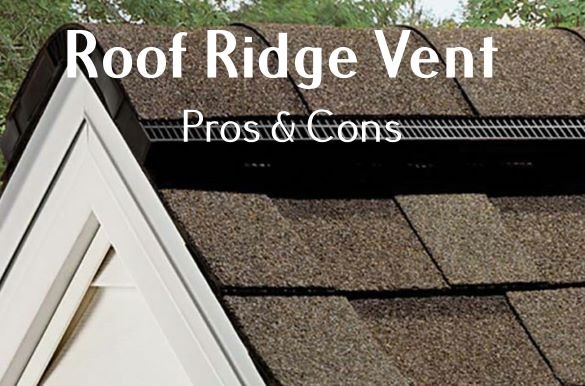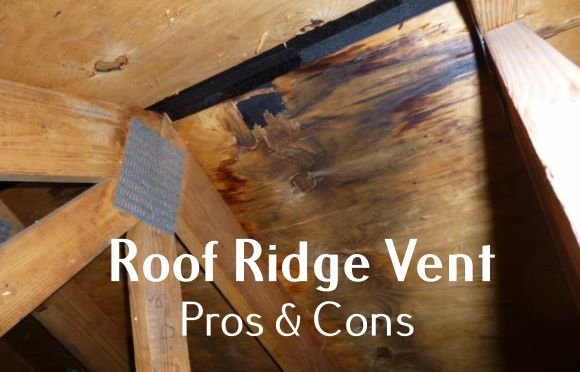You may have heard about the goodness of ridge vents. It is cheap, easiest to install, and recommended by many. Those are what they say about ridge vents.
Are those the truths? What are the drawbacks of this ventilation method? This article will show you the pros and cons of roof ridge vents so you can decide whether to use this method for your house.
Roof Ridge Vent Pros and Cons
The roof ridge vent is known as one of the most used ventilation systems in houses. Not only is it effective, but it also costs relatively less than other ‘techy’ methods, for example, the electric-powered attic vent or solar-powered attic vent.

The roof ridge vent pros and cons are as stated below :
Pros:
- It helps to balance the temperature of the house. A ridge vent helps to balance your house’s temperature by enabling warmer air to escape the house naturally, keeping the house cool during summer.
- Since it has a simple look and no need to show off, the ridge vent’s shape isn’t prominent at all, unlike roof turbines or cupola vents.
- It is hard for pests to get through. Generally, people will also install blockage that prevents the little guys (rodents, raccoons, squirrels, or even snakes) from getting through your attic. Thanks to this blockage system, it’s pretty hard for bigger pests to get through the narrow entrance.
- It helps air out of the attic naturally. Air pressure plays the role of releasing cool air outside and releasing warm air.
- No need to use this venting method with electricity.
Cons:
- It may take a higher chance to get your attic wet due to some rain snow splash.
- Ridge vents don’t work in all types of roofs. For example, flat roofs cannot benefit from this ventilation method. You need to place the vent in the slanted roof.
- If you own an older home, its installation cost will be higher as you may need to add soffit vents as well.
Read also: Best Roof Ventilation Methods
Are Ridge Vents Worth It?
It depends on the situation of your house itself. Let’s say, if you own a new house with a slanted roof, then it is fine for you to install ridge vents. After all, it suits your house’s features, and installing it seems to lower ventilation costs.
To say it in general, most people will say that ridge vents offer significant benefits, despite the ridge vents’ pros and cons. It is effective enough to deliver humid and hot air outside and replace it with cooler, fresh air.
Compared with other mechanical ventilation methods (not electricity-powered), many people choose this ventilation method as the best one. So, you may hear people suggesting ridge vents to answer the ‘What is the best roof vent for a house?’ question.
Roof Ridge Vent Problems

- Leaking: Especially if the vent is installed improperly.
- Blow-off problem: If the area where you live is often struck by some wild wind, installing a ridge vent shouldn’t be your pick. Although using long nails to secure your roofing system may help, that does not mean the problem is permanently fixed.
- Cracks: They may come as well, especially after extreme weather. Despite it being made from durable plastics, there are also chances of breaking it after extensive exposure to extreme weather.
- Installing it may reduce the effectiveness of other exhaust vents.
That sums up some information about roof ridge vent pros and cons, problems that may come with its installation and its worthiness. To avoid the problem coming with it, you need to know how to install it properly.
Hiring a specific team to do it will help you avoid the problems mentioned earlier.


